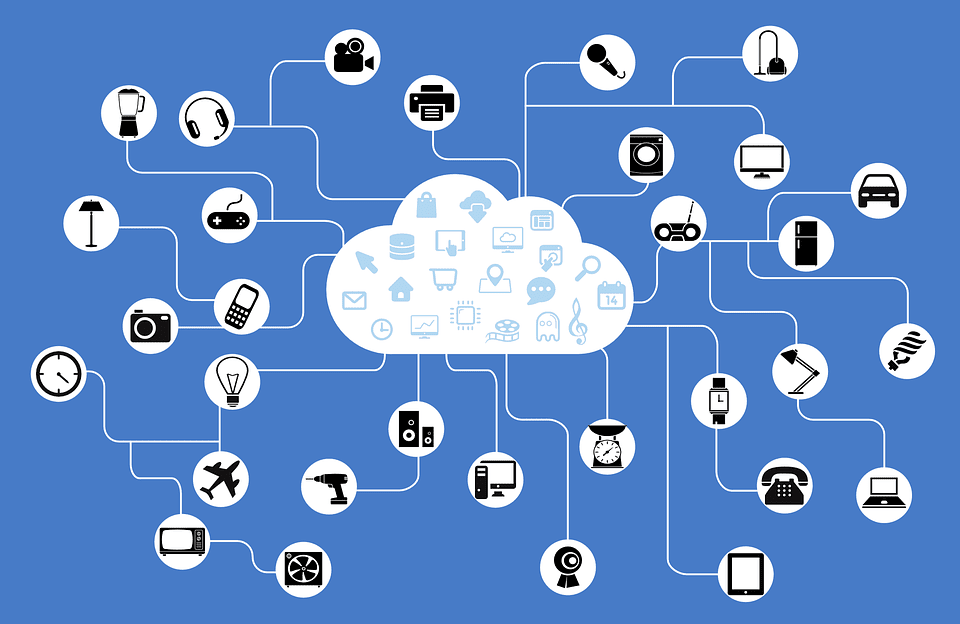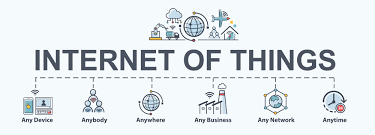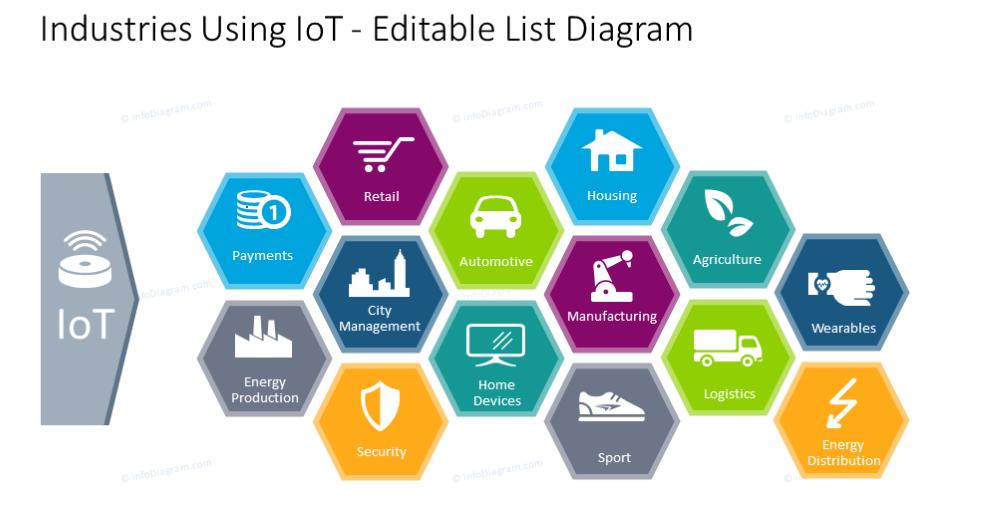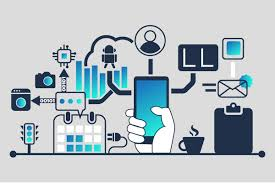What is IoT?
Introduction
In this article, we will understand the basic concept of Internet of Things(IoT), how it works and its importance in our world today. IoT is influencing our lifestyle from air conditioners that can be controlled by smartphones to smart cars providing the shortest route or the smartwatch that tracks our daily activity.

What Is an IoT?
Internet of Things (IoT) is simply an ecosystem of any physical devices, cars, home appliances and other objects that can (or we can make to) collect and exchange data through the internet.
This is the overview, but there are four layers through which this domain name query goes through. Let's understand the steps:
How IoT works
The devices gather and share data about how they are used and the environment in which they are operated. Sensors are embedded in every physical device. It can be a mobile phone, electric appliances, vehicles, barcode sensors, traffic lights, and more. These sensors continue to emit data about the working state of the device. How do they share this vast amount of data? IoT provides a common platform for devices to dump their data and a common language for all the devices to communicate with each other. Data is emitted from various sensors and sent to the IoT platform securely. IoT platform integrates the collected data from various sources. Further, analytics is performed on the data, and valuable information is extracted as per requirement. Finally, the result is shared with other devices for better user experience automation.
Technologies that have made IoT possible?
The following technologies have played a crucial role in implementing the IoT practically:
1. Cloud Computing
A massive amount of data is gathered from the device's sensors. Therefore, some considerable space is needed to not only process but also store this data, and this is where Cloud computing plays its role. Cloud computing allows the potential to quickly and faultlessly process a significant amount of data. Identity management platforms are one such example that uses the IoT solution to offer data security. The advantage of using the cloud is that it is more scalable and efficient.
2. Sensors
 Sensors are considered as the main component of IoT as they collect and gather the data from the devices and then broadcast it to the IoT cloud platform to process the data. Sensors allow inter-device interaction as they use lithography procedures similar to how microprocessors work. Thus low cost and reliable sensors are making IoT technology possible for more manufacturers.
Sensors are considered as the main component of IoT as they collect and gather the data from the devices and then broadcast it to the IoT cloud platform to process the data. Sensors allow inter-device interaction as they use lithography procedures similar to how microprocessors work. Thus low cost and reliable sensors are making IoT technology possible for more manufacturers.
3. IPv6
IPv6 is the advanced version of the primary communication capable of identifying and locating computers and devices on the internet. It improves performance, provides a more efficient packet handling, and improves security.
There are three factors why IPv6 is relevant?
Security: Provides end-to-end encryption and supports a more secure name resolution.
Scalability
Connectivity
4. Machine Learning and Analytics
With machine learning being the technology of the century, businesses can gather insights faster and more efficiently by accessing vast amounts of data stored in the cloud. The emergence of these allied technologies continues to push the boundaries of IoT, and the data produced by IoT also feed these technologies.
5. Conversational Artificial Intelligence
Neural networks have implemented natural-language processing (NLP) to IoT devices such as digital personal assistants Alexa, Cortana, and Siri and made the devices appealing, affordable, and viable for home use.
1. Manufacturing
Manufacturers get an advantage by using production-line monitoring to enable proactive maintenance on equipment in the case of sensors detect an impending failure. Sensors are capable of measuring when production output is compromised. Thus manufacturers can quickly check equipment for the accuracy or remove it from production until repaired with the help of sensor alerts. It allows companies to reduce operating costs, get better uptime, and improve asset performance management.
2. Automotive
IoT offers a significant advantage in the automotive industry, by applying for its benefits from the production lines, sensors can detect equipment failure if any in the vehicles on the road and alert the driver with details and recommendation. Automotive suppliers and manufacturers learn about keeping the vehicles moving and owners informed by aggregated information data gathered by IoT.
3. Transportation and Logistics
Logistical and transportation systems make use of IoT applications. Fleets of lorries, cars, ships, and trains carrying inventory are rerouted based on factors like weather, traffic, vehicle availability, driver availability, and more because of IoT sensor data. The goods or the inventory could be equipped with sensors and could also be checked for temperature monitoring and tracking.
Temperature monitoring goods industries like food and beverages, pharmaceuticals, and more make use of IoT sensors to timely monitor the temperature of their goods and send alerts when the temperature rises or falls to the level that could be a threat to the product.
4. Healthcare
IoT technology offers enormous benefits to the healthcare industry. Patience assistance assets such as wheelchairs could be found easily with the help of IoT sensors. Similarly, many other hospital assets could be tracked, ensuring proper patient care.
Industries that use IoT technology
1. Manufacturing
Manufacturers get an advantage by using production-line monitoring to enable proactive maintenance on equipment in the case of sensors detect an impending failure. Sensors are capable of measuring when production output is compromised. Thus manufacturers can quickly check equipment for the accuracy or remove it from production until repaired with the help of sensor alerts. It allows companies to reduce operating costs, get better uptime, and improve asset performance management.
2. Automotive
IoT offers a significant advantage in the automotive industry, by applying for its benefits from the production lines, sensors can detect equipment failure if any in the vehicles on the road and alert the driver with details and recommendation. Automotive suppliers and manufacturers learn about keeping the vehicles moving and owners informed by aggregated information data gathered by IoT.

3. Transportation and Logistics
Logistical and transportation systems make use of IoT applications. Fleets of lorries, cars, ships, and trains carrying inventory are rerouted based on factors like weather, traffic, vehicle availability, driver availability, and more because of IoT sensor data. The goods or the inventory could be equipped with sensors and could also be checked for temperature monitoring and tracking.
Temperature monitoring goods industries like food and beverages, pharmaceuticals, and more make use of IoT sensors to timely monitor the temperature of their goods and send alerts when the temperature rises or falls to the level that could be a threat to the product.
4. Healthcare
IoT technology offers enormous benefits to the healthcare industry. Patience assistance assets such as wheelchairs could be found easily with the help of IoT sensors. Similarly, many other hospital assets could be tracked, ensuring proper patient care.
IoT Security and Privacy Concerns
Generally, when it comes to the internet, security is a major issue. So nothing is totally exempted from the security issue of the internet including IoT devices or gadgets. Anything that relates to the internet is at risk and needs some sort of security.
Now, it is not only us with our computers, but there are also "things" that interact with the Internet without our intervention. These "things" are continually communicating with the Internet, a fridge sending an update of the food inside or our vehicle transmitting messages to the mechanic to inform its oil levels.
 IoT is wonderful in many ways. But unfortunately, technology has not matured yet, and it is not entirely safe. The entire IoT environment, from manufacturers to users, still have many security challenges of IoT to overcome, such as:
IoT is wonderful in many ways. But unfortunately, technology has not matured yet, and it is not entirely safe. The entire IoT environment, from manufacturers to users, still have many security challenges of IoT to overcome, such as:
- -Manufacturing standards
- -Update management
- -Physical hardening
- -Users knowledge and awareness
- -Highjacking Your IoT Devices
- -Industrial Espionage & Eavesdropping
- -Rogue IoT Devices
- -Cryptomining with IoT Bots
Conclusion
There is no question whether IoT is a good technology or not. It obviously is and would help a lot in our homes and we have seen the emergence of IoT as a trend in the last few years. There are smart devices coming out that we never thought needed an Internet connection: smart toothbrushes, beauty mirrors, tables, pillows, beds, and the list continues to grow. The world is turning into a network of objects collecting our personal, sensitive information. But my own personal questions is it going to be affordable and still retaining or maintaining the highest possible efficiency as well as critical features like security and cost-effectiveness? Only time can tell?
- -Manufacturing standards
- -Update management
- -Physical hardening
- -Users knowledge and awareness
- -Highjacking Your IoT Devices
- -Industrial Espionage & Eavesdropping
- -Rogue IoT Devices
- -Cryptomining with IoT Bots
References and Information Sources











